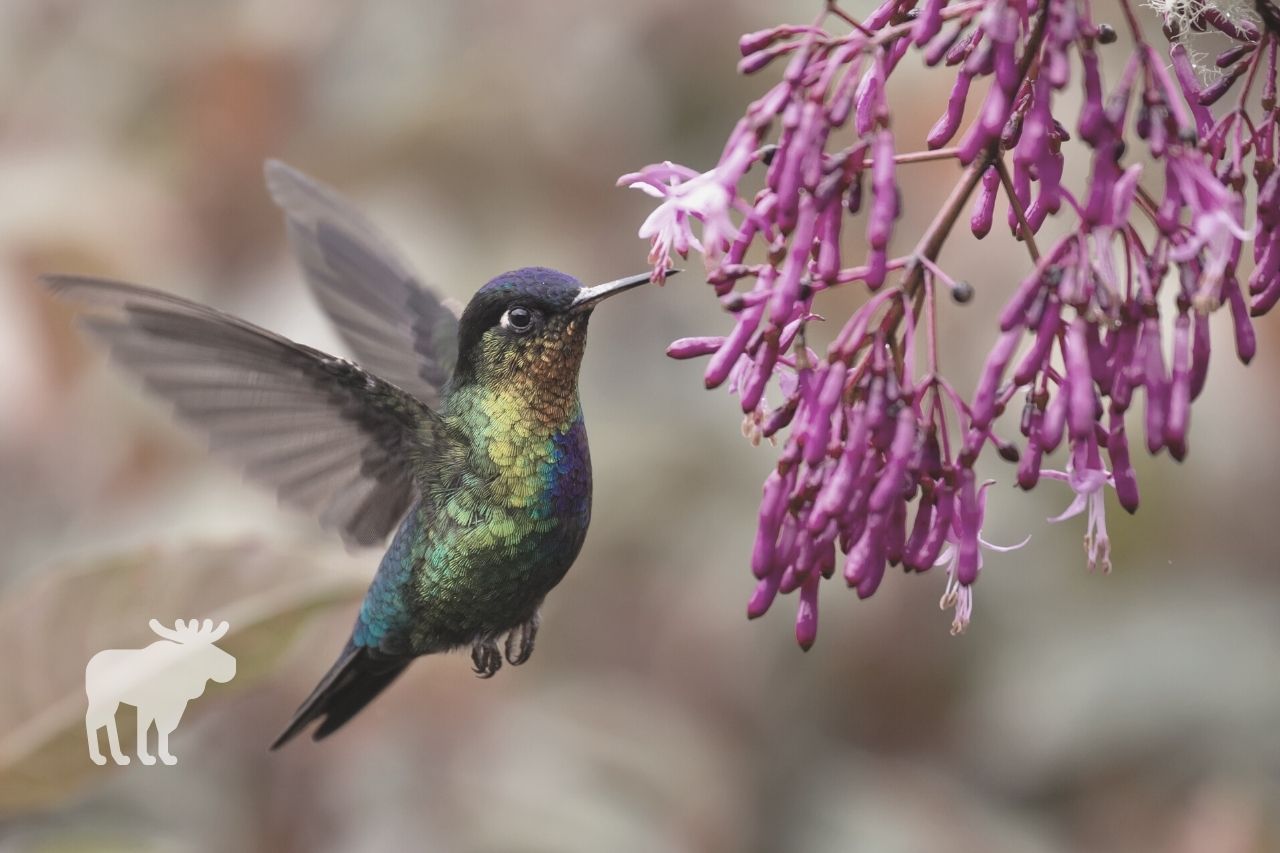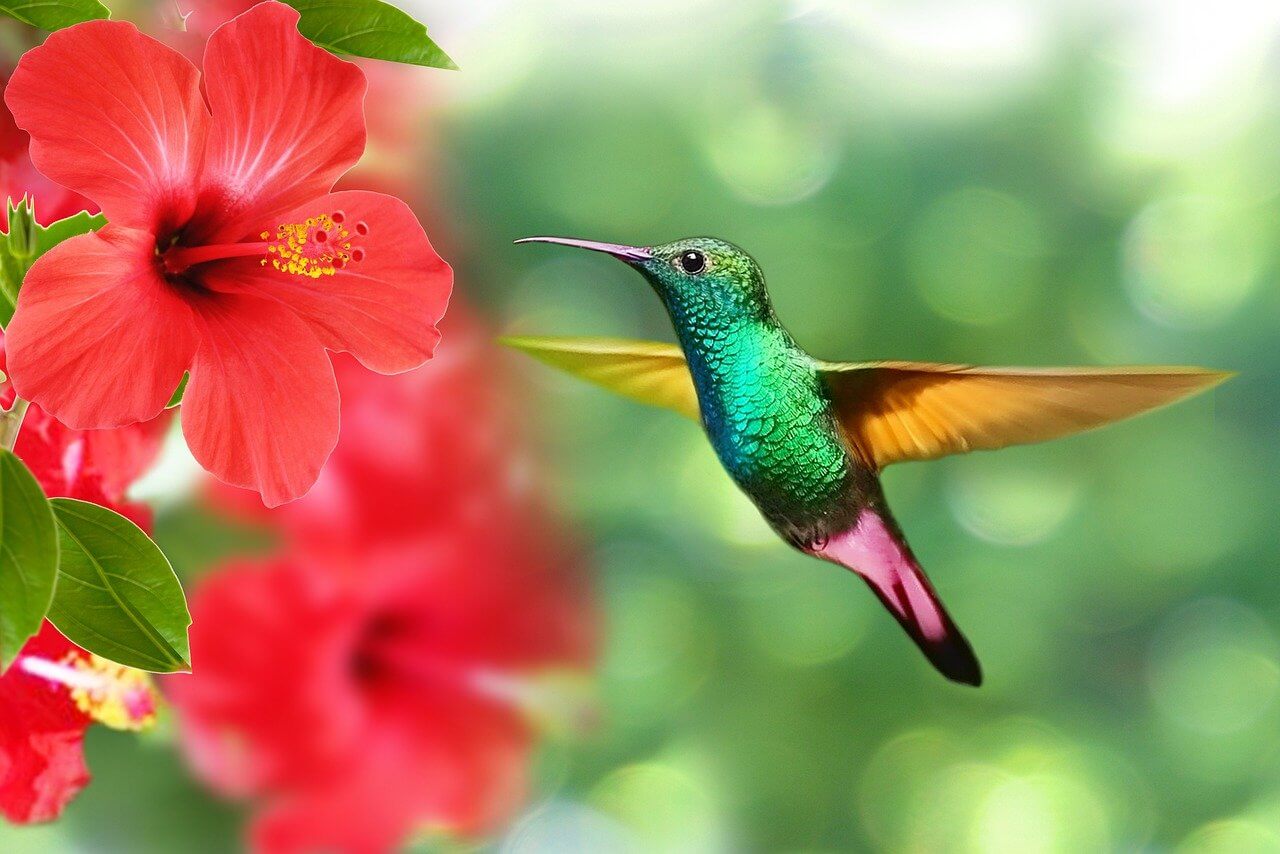If you’ve ever seen a hummingbird hovering, you might have been amazed by the physical abilities of these tiny birds. But how do they do it? And why is the ability to hover useful to a hummingbird? Can they also fly backwards or in other directions? Keep reading! In this article, we’ll answer these questions and more.
What You'll Learn Today
Why Do Hummingbirds Hover?

Hovering is one of a hummingbird’s most natural movements. In fact, there is reason to believe that the first helicopter was designed after this unique ability of the hummingbird.
But why do hummingbirds hover? What is the benefit of hovering?
It appears that hummingbirds hover for a few different reasons, but the primary reason is that it allows them to move quickly in a variety of directions.
When a hummingbird hovers, it is essentially hanging there in midair; it may appear to be stationary, but its wings are beating quickly. If a threat were to present itself, or if the hummingbird had some need to escape, it could simply fly away.
This saves time from having to lift off if it were perched. It also allows the hummingbird to move backward, forward, sideways, up, or down more easily and quickly than it would be able to if it was starting from a perched position.
Hummingbirds sometimes hover while feeding, though this usually happens only when there is no good place to perch near the food source. It may also be the case when a less dominant bird is trying to feed while frequently being chased away by a more dominant bird.
If there is an opportunity to perch while feeding, hummingbirds appear to prefer perching over hovering. This is likely because hovering requires a greater amount of energy, so it is less efficient.
How Do Hummingbirds Hover?
Now that we’ve discussed why hummingbirds hover, you may still be wondering, how do they do it?
The secret lies in their unique flight pattern, which is more similar to that of flying insects than other birds.
Most birds flap their wings in a fairly straightforward up-and-down pattern, but a hummingbird’s flapping pattern involves a lot more movement. Hummingbirds twist their wings as they flap forward and backward, as shown in the video below.
Hummingbirds have wings that are extremely strong and stiff so they don’t break, as this flight pattern is very hard on their wings. Their wrists bear the majority of the strain on their wings as they hover.
This forward-backward flapping pattern allows the hummingbird to get about 75 percent of lift during the down stroke and about 25 percent on the up stroke. This is another difference from other birds, as most get about 50 percent of lift on both the upstroke and downstroke or 100 percent of lift from the downstroke.
This lift ratio, along with the twisting action of the wings during the flapping pattern, allows hummingbirds to remain stationary. Meanwhile, very minute adjustments allow them to change directions and move in various other ways quickly if necessary.
Do Hummingbirds Fly Backwards?
Yes, hummingbirds can fly backwards. In fact, they are the only bird in the world that can do this.
A hummingbird’s ability to fly backward is caused by the same flight skills that allow the bird to hover. Again, its unique forward-backward flapping pattern allows it to not only hover, but make slight adjustments to move in any direction.
Why Do Hummingbirds Make Noise When They Fly?

All birds make some noise when they fly, and hummingbirds are no exception. The noise made comes from the flapping action as the bird’s wings cut through the air.
With larger birds, you may hear this noise as a distinct “flap-flap” or “whoosh-whoosh” sound. This is because their wings flap relatively slow so you may be able to hear each distinct wing beat.
With hummingbirds, you hear the noise as a sort of buzzing sound. This is because their wings are small and are flapping so rapidly that you can’t hear each individual wing beat; instead, you hear all the wingbeats together as a collective sound–a somewhat high-pitched buzzing.
Conclusion
Hummingbirds hover because it allows them to change directions quickly and easily when they need to move. They also sometimes hover when they are feeding, though if they have a perch available to them, they will use it because hovering requires a lot of energy and is inefficient.